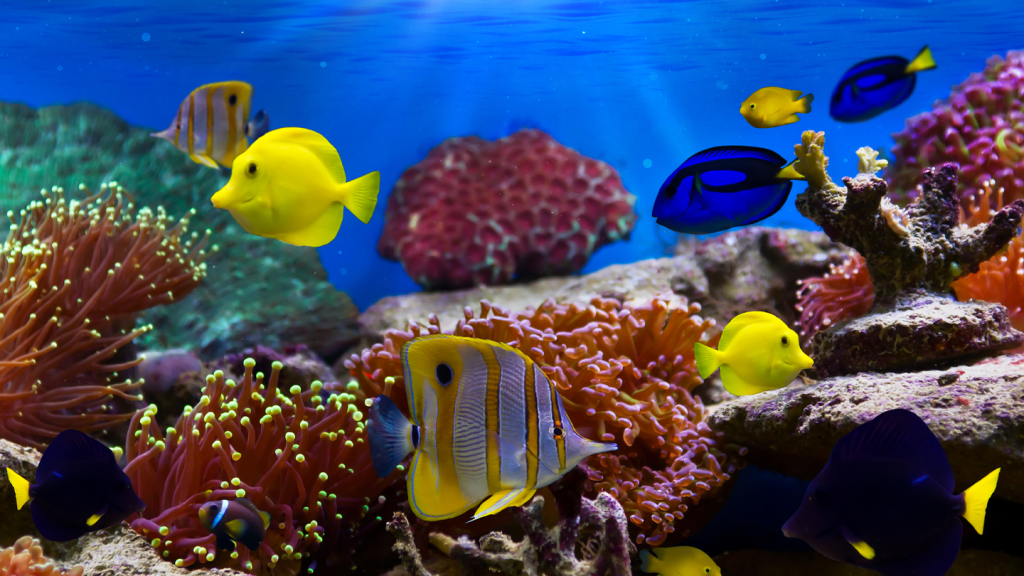Color is one of the most distinguishing features of a coral reef. Corals are colorful primarily due to the pigments produced by the proteins inside of the coral, that reflect a variety of light. They then absorb one color of light, which then determines what color they appear to be. Brilliant hues might also help save the world’s threatened reefs. A study published today in the open access journal PLOS Biology, describes a new low-cost staining method that uses color to help scientists track coral larvae as they disperse and eventually settle in coral reefs.
[Related: Disease-resistant super corals can save vulnerable reefs.]
Coral reefs are currently threatened by pollution, climate change, ocean acidification, and more. The marine invertebrates reproduce by producing trillions of microscopic larvae that can travel up to 62 miles and then settle into the seabed. Their tiny size and massive travel radius make tracking the larvae a challenge.
A team of researchers collected nearly 3,000 larvae from lab-reared corals of Acropora spathulata and Platygyra daedalea to test this new tracking method. The larvae were then incubated with one of four colored dyes at different concentrations.
The team found that two dyes– neutral red and Nile blue– successfully stained the coral larvae, while having minimal impact on their survival and eventual settlement in the sea floor. They then tested these two dyes on four other coral species in the lab, and found it successfully stained 90 percent of the larvae.
Representative images of free-swimming and newly metamorphosed larvae (Nile blue, unstained, neutral red) from Acropora anthocercis, Platygyra sinensis, Coelastrea aspera, and mixed Nile blue and neutral red stained Dipsastraea favus larvae. CREDIT: Doropoulos C and Roff G, 2022, PLOS Biology
However, testing in a lab is more like testing in a fish tank compared to the open ocean. To test this technique in the field, the team used eggs from wild spawning corals on the Great Barrier Reef and cultured them in larval pools in the Lizard Island Lagoon off the northeastern coast of Australia. They stained 10,000 larvae with the Nile blue dye and detected successful settlement of stained larvae on some of the tiles placed in the lagoon.
[Related: Scientists grow stunning, endangered coral in a lab.]
“We have developed a novel method for colouring large numbers of coral larvae (millions to billions),” said Christopher Doropoulos, a marine ecologist with CSIRO Oceans & Atmosphere, and a co-author of the study, in a statement. “Our method allows for immediate differentiation and visual tracking of coral larvae from dispersal to settlement, and will facilitate a wide range of de novo studies of larval behaviour and ecology.” Doropoulos co-wrote the study with George Roff, also a marine ecologist at CSIRO Oceans & Atmosphere, Australia’s largest government-supported science research agency.
According to this study, this method is a quick, simple, and non-toxic approach to studying coral larvae dispersal that only costs about one US dollar to stain 100,000 larvae. Additionally, the different color dyes could be used as a color code to differentiate between groups or coral species, in conservation planning, studying behavioral ecology, and reef restoration experiments.
The post To save coral reefs, color the larvae appeared first on Popular Science.

